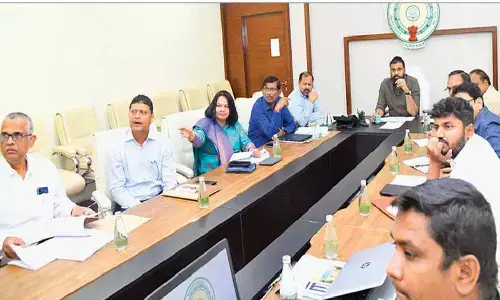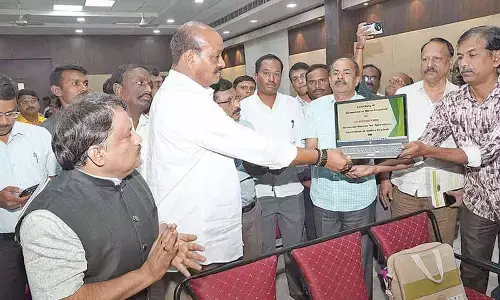Mangrove fishing cats hunted, driven away

Mangrove fishing cats hunted, driven away
- Godavari and Krishna mangroves in AP are home to fishing cats
- At present 150 fishing cats, at a density of 3 animals for 10 km recorded
Amaravati: The Fishing Cats, scientifically called Prionailurus viverrinus, which made the mangroves in the Godavari and Krishna river deltas in Andhra Pradesh, along with many wetlands in the country and countries in South and Southeast Asia as their home, are facing a threat of extinction.
Human activities such as wetland conversion for agriculture and development, as well as hunting and trapping for their fur and body parts are posing a threat to their existence. Fishing cats live for about 12 years in the wild but are secretive and elusive medium-sized wildcat species. They sit on the edge of the bank for hours patiently for the right moment to catch the fish, though they can also prey on frogs, birds, rodents, molluscs, snakes, and other invertebrates when they are in the mood for a hunt during nights in their own territory of about 5 sq km.
Apart from the mangroves and coastal wetlands in Rajasthan, Uttar Pradesh, and West Bengal, the Coringa Wildlife Sanctuary, Krishna Wildlife Sanctuary, Kakinada Bay Mangroves, Upputeru, Kolleru, Nizampatnam estuaries in Andhra Pradesh are home to the fishing cats, one of the ten small cat species present in India.
Various studies done by the Wildlife Institute of India in association with the Forest Department of Andhra Pradesh, Fishing Cat Conservation Alliance, and East Godavari River Estuarine Ecosystem Foundation between 2015 and 2018 proved that the Godavari and Krishna River deltas have around 150 fishing cats, at a density of 3 animals for 10 kilometres.
Giridhar Malla, a small cat biologist who worked with the Fishing Cat Conservation Alliance, observed that the major threats to the fishing cat population in Andhra Pradesh are due to the loss and degradation of mangroves and other coastal wetlands, mainly driven by the expansion of the aquaculture and industrial development.
AV Apparao, another researcher working with the Forest Department, explained that the fishing cats, which are territorial animals, should make their own place after leaving the mother after a year of birth, and they are dying in the process. They are becoming victims of traps by poachers for meat, bones, fur and skin, and being killed in accidents or hunted by dogs when they are in search of habitat.
L Bheemaiah, Bapatla district forest officer, explained that many people confuse the fishing cats as tiger cubs, for their marks on the body and killing them, quoting a recent incident of Air Force base station staff claiming to be sighting a tiger. He said that the forest department is making efforts to conserve the fishing cats, along with other wild animals. He assured that they would put more camera traps immediately after they receive funding from the government.

















